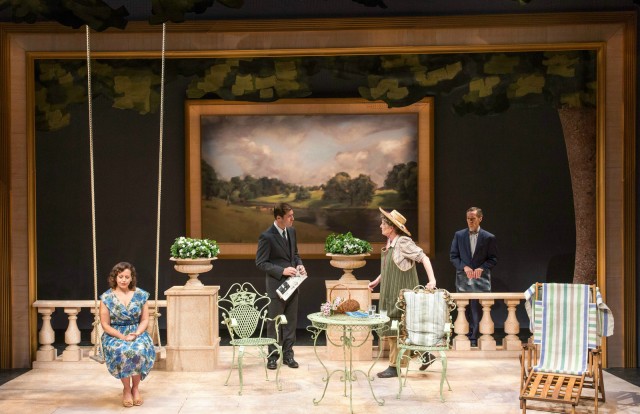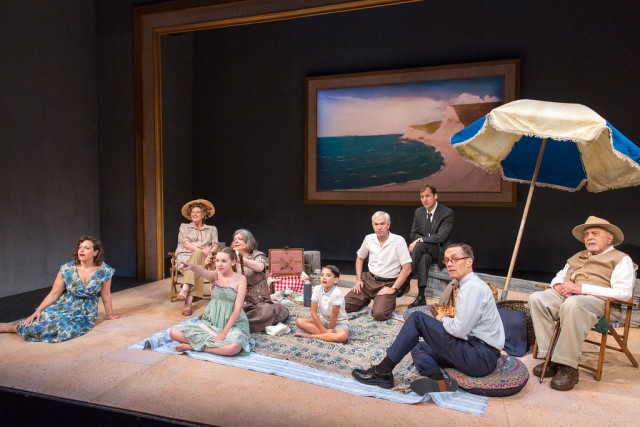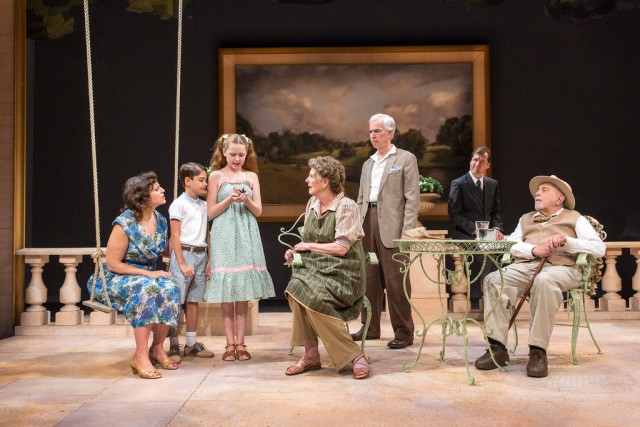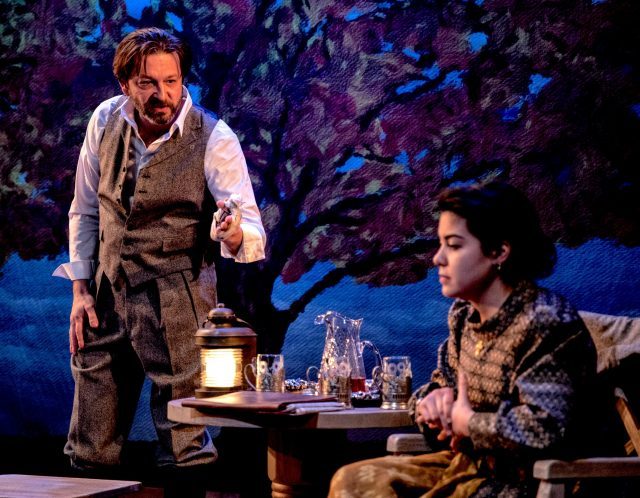
Nicov (Alexander Sokovikov) argues with Lidia (Brittany Anikka Liu) over the social contract in The Artist (photo by Maria Baranova)
Theatre Four at Theatre Row
410 West 42nd St. between Ninth & Tenth Aves.
Through March 14, $35-$65
212-560-2183
minttheater.org
bfany.org
One of the city’s most reliably consistent companies, the Mint, scored successes with its initial two productions of works by British character actor, screenwriter, and playwright Miles Malleson, 2017’s Yours Unfaithfully and 2018’s Conflict. But it’s unable to pull off the hat trick with Chekhov/Tolstoy: Love Stories, a pair of Russian short stories Malleson adapted into plays that have been brought together for the first time, running at Theatre Row through March 14. The Artist, based on Anton Chekhov’s “An Artist’s Story,” published in the April 1896 issue of Russkaya Mysl, takes place in a Russian country house where painter Nicov (Alexander Sokovikov) is staying. After five weeks, he has finally found inspiration, primarily in eighteen-year-old Genya (Katie Firth), who lives on Monsieur Byelkurov’s (J. Paul Nicholas) estate with her older sister, teacher and activist Lidia (Brittany Anikka Liu), and their mother (Anna Lentz). While Genya and Nicov share a flirtation, Lidia and the artist battle over social issues.
“Let them have time to breathe, don’t let them spend all their lives at the stove, at the washtub, on the fields — slaving, slaving, slaving just to keep alive,” Nicov, who was portrayed by Malleson in the 1919 original, says of the working class. “Let them have time for the life of the spirit. The highest vocation of man is spiritual activity, spiritual effort — the perpetual search for truth and the meaning of life. And when a man has recognised that vocation he can only be satisfied by religion, by science, by philosophy, by art, by the great things — and nothing else. And then, and not till then, civilisation will mean freedom.” An angry Lidia responds, “These are the things people say when they want to justify their inaction.” Directed by Mint head Jonathan Bank (Unfaithfully Yours, Katie Roche), The Artist is like an unfinished painting, feeling more like a work in progress than a completed piece. It’s difficult to get involved in the trials and tribulations of these people; neither the characters nor the plot is particularly compelling. The Mint is renowned for their sets, but Roger Hanna’s design for the play consists merely of a canvas on an easel, some chairs and a table, and a painted backdrop of a large tree that overwhelms everything.
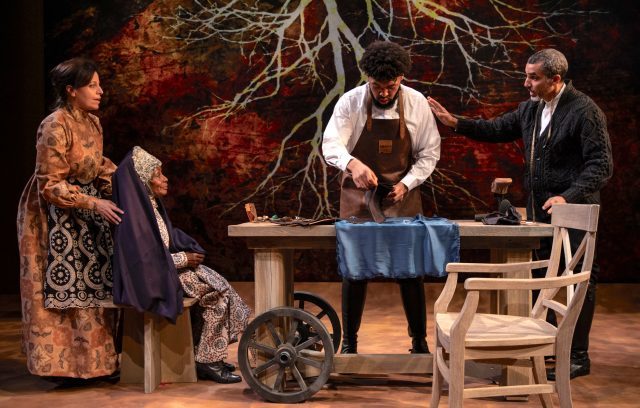
Matryona (Katie Firth), Aniuska (Vinie Burrows), and Simon (J. Paul Nicholas) try to unravel the mystery of Michael (Malik Reed, center) in What Men Live By (photo by Maria Baranova)
The backdrop rotates to the threatening roots under the tree for Malleson’s adaptation of Leo Tolstoy’s 1885 short story “What Men Live By.” In a Russian peasant hut where expert shoemaker Simon (J. Paul Nicholas) works with his wife, Matryona (Katie Firth), and the elderly Aniuska (Vinie Burrows), Simon comes home one night with the mysterious Michael (Malik Reed), a shoeless beggar who doesn’t speak and rarely smiles, even after Matryona agrees to let him apprentice with Simon, who quickly discovers that Michael is an extremely talented artisan. When they receive a special order from a nobleman (Sokovikov), Simon sees it as an important opportunity, until Michael takes things in a different direction.
In her directorial debut, longtime Mint sound designer Jane Shaw can’t find the heart of the religious-tinged tale, which was originally produced in 1919 as an antidote to the horrors of WWI. The conflicts never feels urgent enough, with plot twists coming too fast to let the drama take hold. While The Artist moves too slowly, What Men Live By packs too much into too little time on its way to its not-necessarily-surprising final revelation. Both works end up underwhelming, as if still being cobbled together, which is a rarity for the highly professional, superbly efficient Mint.
